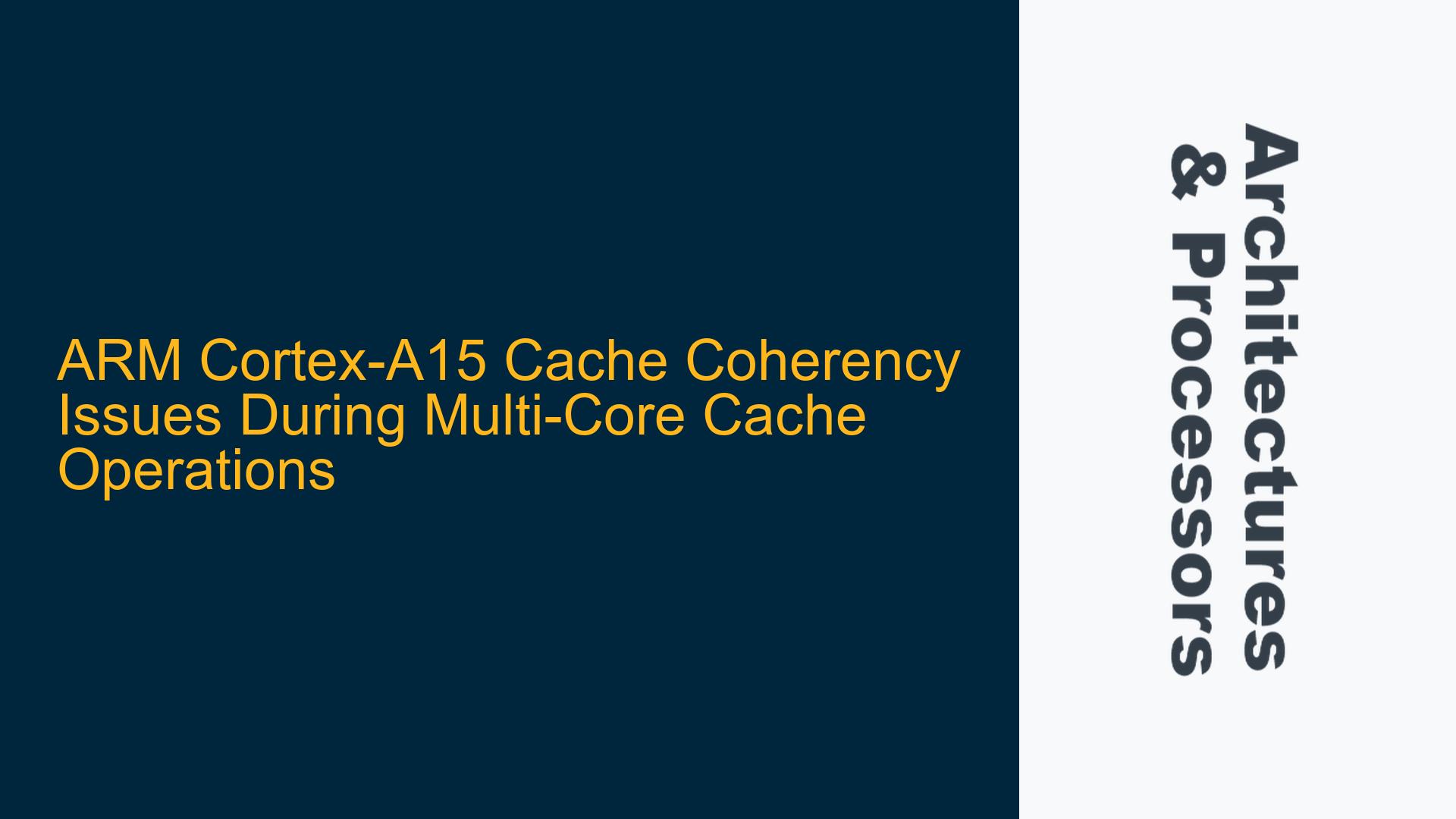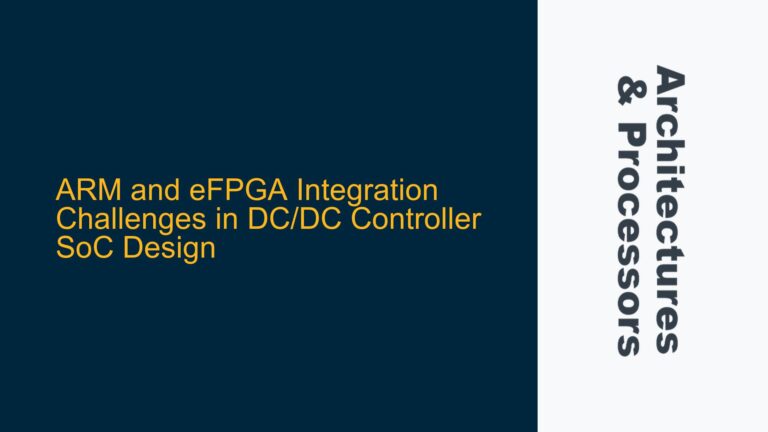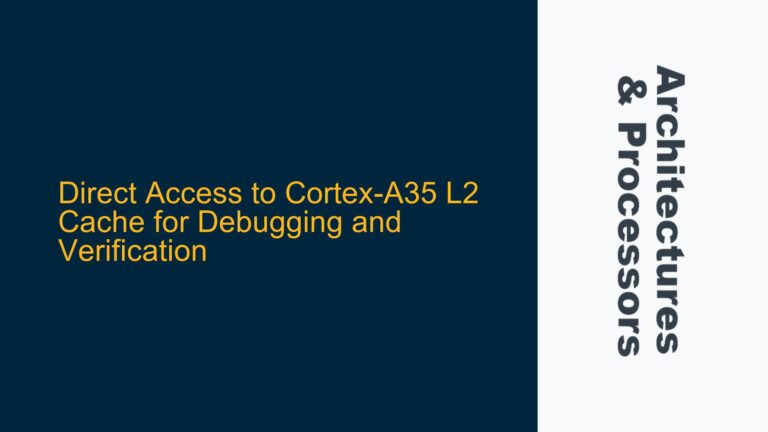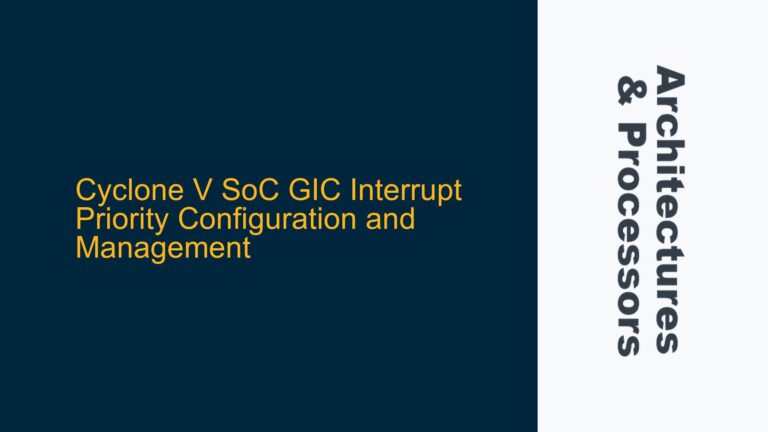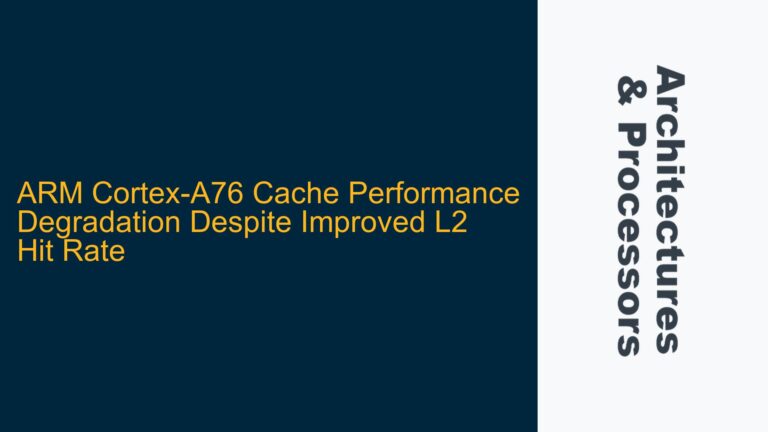Cache Coherency Behavior in ARM Cortex-A15 During Multi-Core Cache Flush and Invalidate Operations
In ARM Cortex-A15-based systems, cache coherency is a critical aspect of ensuring data integrity and consistency across multiple cores. When two cores, such as Core 0 and Core 1, operate within the same inner shareable domain and access the same cache line, the behavior of cache maintenance operations like flush and invalidate becomes a complex topic. Specifically, when Core 0 performs a cache flush or invalidate operation on a cache line that is also being accessed by Core 1, the system must ensure that the coherency rules are upheld to prevent data corruption or stale data access.
The ARM Cortex-A15 processor implements a hardware-coherent cache system, but software-coherent configurations are also possible depending on the system design. In a software-coherent system, the responsibility for maintaining cache coherency falls on the software, which must explicitly manage cache operations. This includes ensuring that cache maintenance operations like Data Cache Clean and Invalidate by Virtual Address to Point of Coherency (DCCIMVAC) are correctly handled across cores.
When Core 0 issues a DCCIMVAC operation, the operation affects the cache line at the specified virtual address. This operation cleans the cache line, ensuring that any modified data is written back to the main memory, and then invalidates the cache line, removing it from the cache. The key question is whether this operation is automatically propagated to Core 1, given that both cores are part of the same inner shareable domain.
In ARMv7-A architecture, cache maintenance operations like DCCIMVAC are not broadcast in the traditional sense. Unlike TLB (Translation Lookaside Buffer) invalidates, which can be broadcast to all cores, cache operations are not inherently broadcast. However, due to the coherency rules of the ARM architecture, the effects of a cache operation by one core can impact other cores within the same shareable domain. This is because the cache coherency protocol ensures that all cores within a shareable domain maintain a consistent view of memory.
For example, if Core 0 performs a DCCIMVAC operation on a cache line that is also cached by Core 1, the operation will cause Core 1 to invalidate its copy of the cache line. This ensures that Core 1 does not continue to use stale data. The coherency mechanism relies on the shareability attributes of the memory region and the domain configuration of the cores. If the memory region is marked as inner shareable and both cores are in the same inner shareable domain, the cache operation will affect both cores.
However, this behavior is not universal for all cache maintenance operations. Set/Way operations, which operate on cache sets and ways rather than specific addresses, do not follow the same coherency rules. These operations are local to the core performing them and do not propagate to other cores. This distinction is crucial for developers to understand when implementing cache management strategies in multi-core systems.
Impact of Shareability Attributes and Domain Configuration on Cache Coherency
The behavior of cache maintenance operations in ARM Cortex-A15 processors is heavily influenced by the shareability attributes of the memory regions and the domain configuration of the cores. Shareability attributes define how memory accesses are shared between different cores and devices in the system. The ARM architecture defines three levels of shareability: non-shareable, inner shareable, and outer shareable.
In the context of cache coherency, inner shareable is the most relevant attribute. When a memory region is marked as inner shareable, it means that the region is shared among all cores within the inner shareable domain. This includes the L1 and L2 caches of the cores. When a cache maintenance operation is performed on an inner shareable memory region, the operation affects all cores within the inner shareable domain.
The domain configuration of the cores also plays a critical role in determining the scope of cache maintenance operations. In the case of the Cortex-A15, the system is typically configured with a single inner shareable domain that includes both Core 0 and Core 1, as well as the L2 cache. This means that any cache maintenance operation performed by Core 0 on an inner shareable memory region will also affect Core 1.
However, if the memory region is marked as non-shareable, the cache maintenance operation will only affect the core that performs the operation. This is because non-shareable memory regions are not subject to the coherency protocol, and each core maintains its own independent copy of the data. Similarly, if the cores are configured in different domains, the cache maintenance operation will not propagate between domains.
The shareability attributes and domain configuration are typically set up during the system initialization phase. The operating system or firmware is responsible for configuring the memory attributes and domain settings based on the system requirements. Developers must ensure that these settings are correctly configured to achieve the desired cache coherency behavior.
In addition to the shareability attributes, the cache maintenance operations themselves have specific requirements that must be followed to ensure correct behavior. For example, the ARMv7-A Architecture Reference Manual specifies that cache maintenance operations must be performed in a specific order to avoid race conditions and ensure data consistency. This includes the use of memory barriers to enforce the correct ordering of memory accesses and cache operations.
Implementing Correct Cache Management Strategies for ARM Cortex-A15 Multi-Core Systems
To ensure correct cache coherency in ARM Cortex-A15 multi-core systems, developers must implement robust cache management strategies that take into account the shareability attributes, domain configuration, and the specific requirements of cache maintenance operations. This involves a combination of hardware and software techniques to maintain data consistency and prevent performance bottlenecks.
One of the key techniques for managing cache coherency is the use of data synchronization barriers (DSBs) and instruction synchronization barriers (ISBs). These barriers ensure that all pending memory accesses and cache operations are completed before proceeding to the next instruction. This is particularly important when performing cache maintenance operations, as it ensures that the effects of the operation are fully propagated before the core continues execution.
For example, when Core 0 performs a DCCIMVAC operation, it should follow the operation with a DSB to ensure that the cache line is fully cleaned and invalidated before proceeding. This prevents the core from accessing stale data or performing subsequent operations on an inconsistent cache state. Similarly, an ISB should be used after modifying the cache configuration or performing a context switch to ensure that the core fetches the correct instructions.
Another important technique is the use of cache locking to prevent eviction of critical data. Cache locking allows developers to lock specific cache lines in the L1 or L2 cache, ensuring that they remain in the cache and are not evicted by other operations. This is particularly useful for real-time systems where deterministic access to critical data is required.
In addition to these techniques, developers must also consider the impact of cache maintenance operations on system performance. Cache operations like flush and invalidate can be expensive in terms of latency and power consumption, especially when performed frequently or on large memory regions. To minimize the performance impact, developers should optimize the use of cache maintenance operations by batching them together and avoiding unnecessary operations.
For example, instead of performing a cache flush or invalidate operation on every memory access, developers can group multiple operations together and perform them in a single batch. This reduces the overhead associated with each operation and improves overall system performance. Similarly, developers should avoid performing cache maintenance operations on non-shareable memory regions, as these operations do not contribute to coherency and only add unnecessary overhead.
Finally, developers should leverage the ARMv7-A Architecture Reference Manual to understand the specific requirements and best practices for cache maintenance operations. The manual provides detailed guidance on the correct use of cache operations, including the order in which they should be performed and the use of memory barriers. By following these guidelines, developers can ensure that their cache management strategies are both effective and efficient.
In conclusion, cache coherency in ARM Cortex-A15 multi-core systems is a complex but critical aspect of system design. By understanding the behavior of cache maintenance operations, the impact of shareability attributes and domain configuration, and the techniques for implementing correct cache management strategies, developers can ensure data consistency and optimize system performance. This requires a combination of hardware knowledge, software expertise, and careful attention to detail, but the result is a robust and reliable system that meets the demands of modern embedded applications.
